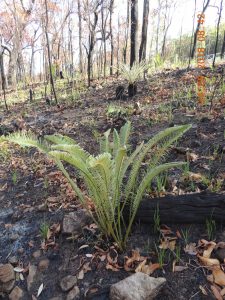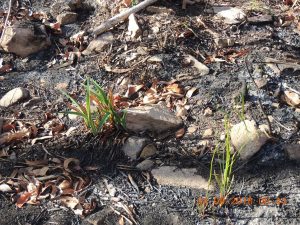Update on Riflebird Courtship at Paluma
In a previous post (5 November 2018) I reported on the frenetic courtship activity of the Victoria’s Riflebird at Paluma during the height of the breeding season for these birds. I noted that many of the juvenile male birds were practising their skills at displaying for females.
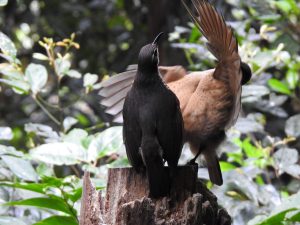
While the young males continue to compete for the attention of females, the adult male birds are also displaying with all the finesse that maturity brings. I captured the elaborate courtship display of one adult male bird who managed to win over his female companion. The courtship ritual and display lasted for almost 10 minutes and was a sight to behold.
- The adult male arrives and sits on his perch, scanning the forest canopy and calling in a loud raucous voice.
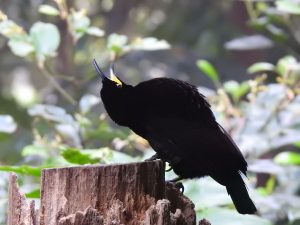
2. A female bird arrives and sits in a nearby tree. He is instantly alert and almost appears to take a bow in her direction.

3. He leaves his perch and flies into the nearby canopy to join her, sitting next to her on a branch. He puffs-up his whole body, raises his wings and the performance begins.
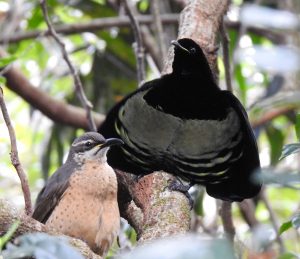
4. He displays frantically over and over with raised flapping wings until he has her full attention. She was looking quite disinterested for a time as the photographs show!.
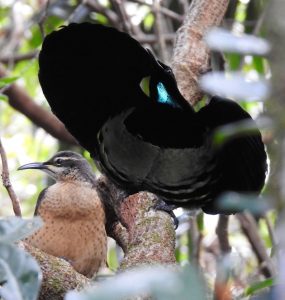
5. Finally he has her full attention and they copulate. No photographs included here, privacy please!
6. He then flies back to his original perch and turns to display again, raising his wings in the direction of the female who is still sitting in the canopy.
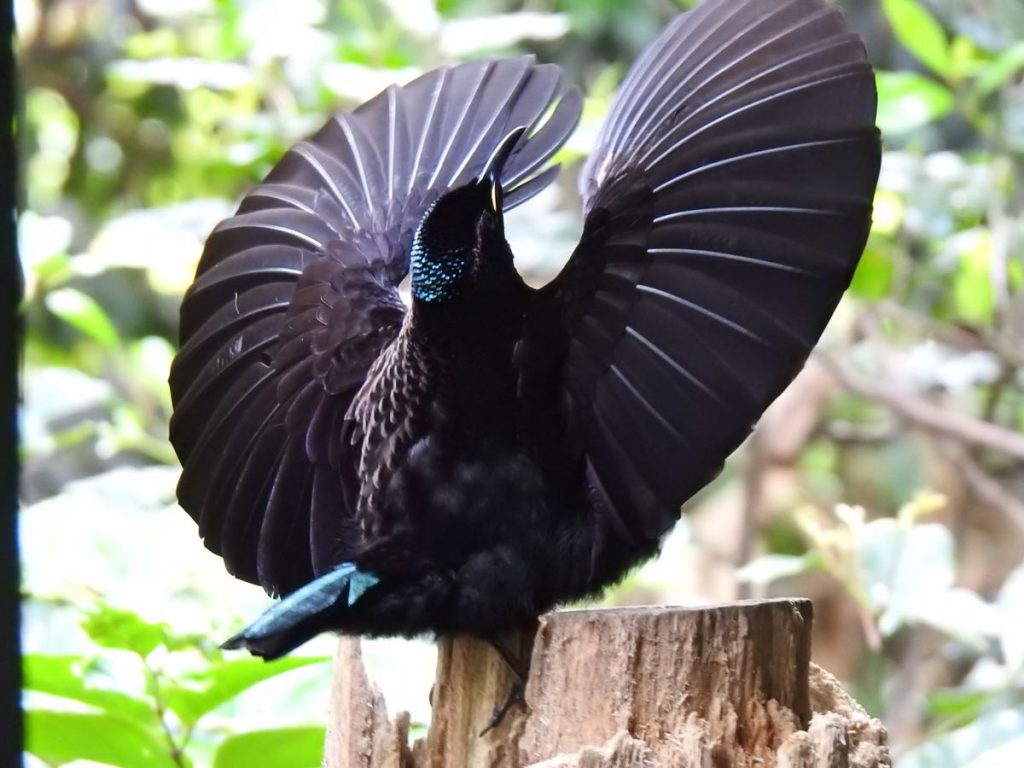
What an amazing and remarkable bird and a truly memorable 10 minutes of my life! Right place at the right time. Or, just another day in the paradise called Paluma.
Article & Photographs by Michele Bird (no pun intended).

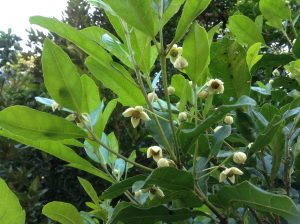 Worldwide, there are about 120 species of Sloanea –named for British scientist and collector Hans Sloan, who lived 1660 to 1753. Four species are endemic to Australia with three of these growing in tropical rainforests in Queensland. Sloanea australis is distributed between the Windsor Tableland and Paluma. Several of these trees may be seen on Mount Spec Road near the Sensory Trail at Paluma Environmental Education Centre where they grow among the stand of forest trees bordering the school property.
Worldwide, there are about 120 species of Sloanea –named for British scientist and collector Hans Sloan, who lived 1660 to 1753. Four species are endemic to Australia with three of these growing in tropical rainforests in Queensland. Sloanea australis is distributed between the Windsor Tableland and Paluma. Several of these trees may be seen on Mount Spec Road near the Sensory Trail at Paluma Environmental Education Centre where they grow among the stand of forest trees bordering the school property.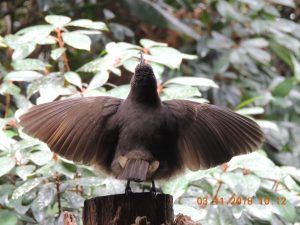
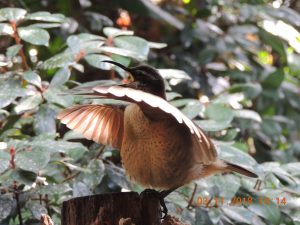
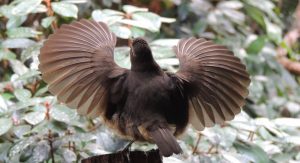
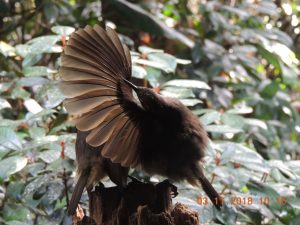
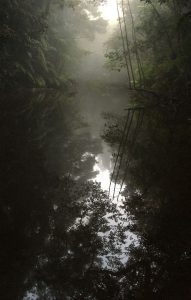
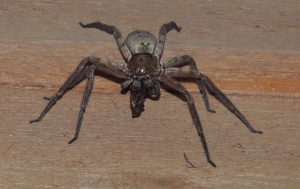
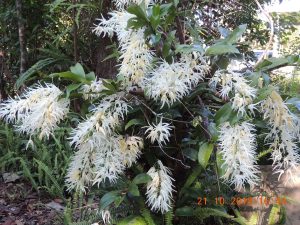
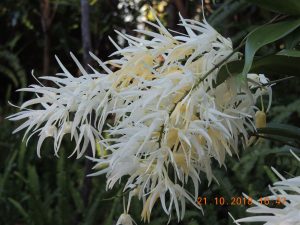
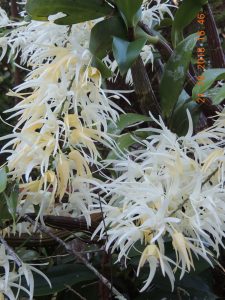
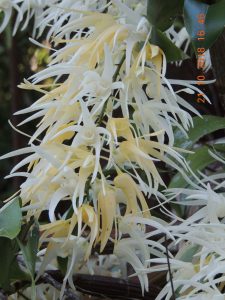
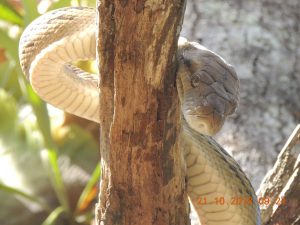 Taking a walk through the village of Paluma and surrounds often leads to encounters with the local wildlife. Last Sunday (21 October) during a stroll through the village on a beautiful sunny morning, we were lucky enough to come across a superb Amethystine Python (Morelia amethistina).
Taking a walk through the village of Paluma and surrounds often leads to encounters with the local wildlife. Last Sunday (21 October) during a stroll through the village on a beautiful sunny morning, we were lucky enough to come across a superb Amethystine Python (Morelia amethistina). 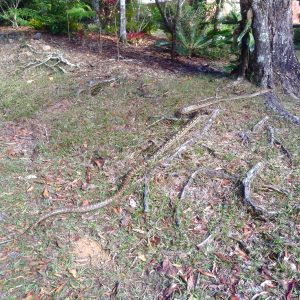 From a distance, we noticed what appeared to be a rather large tree branch extending onto Mt Spec Road at the eastern end of the cutting. Before long it became obvious that the ‘large branch’ was moving and that it was a snake that had settled quite comfortably on the road for a spot of sun baking. This sizeable snake extended across the entire width of the road and more. Fearing a vehicle might soon come along, we swiftly encouraged the snake to move off the road and it ascended a nearby tree. It was not too pleased about being disturbed from its lazy Sunday morning warm-up!
From a distance, we noticed what appeared to be a rather large tree branch extending onto Mt Spec Road at the eastern end of the cutting. Before long it became obvious that the ‘large branch’ was moving and that it was a snake that had settled quite comfortably on the road for a spot of sun baking. This sizeable snake extended across the entire width of the road and more. Fearing a vehicle might soon come along, we swiftly encouraged the snake to move off the road and it ascended a nearby tree. It was not too pleased about being disturbed from its lazy Sunday morning warm-up!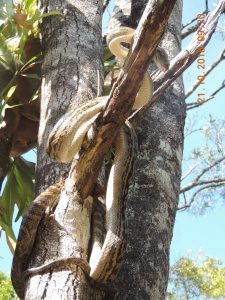
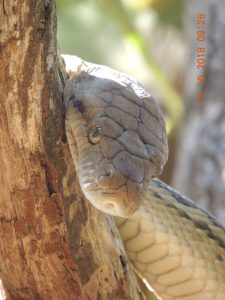
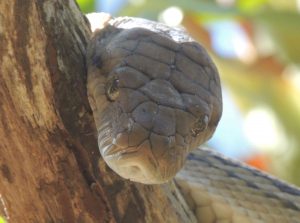
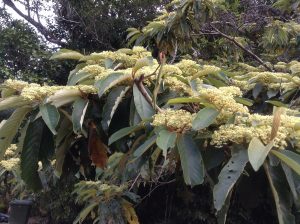

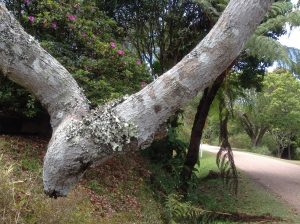 Some people liken the smell to sarsaparilla, hence another popular name for this tree. Rainforest Aborigines used the Alphitonia petriei medicinally, probably as a liniment.
Some people liken the smell to sarsaparilla, hence another popular name for this tree. Rainforest Aborigines used the Alphitonia petriei medicinally, probably as a liniment.